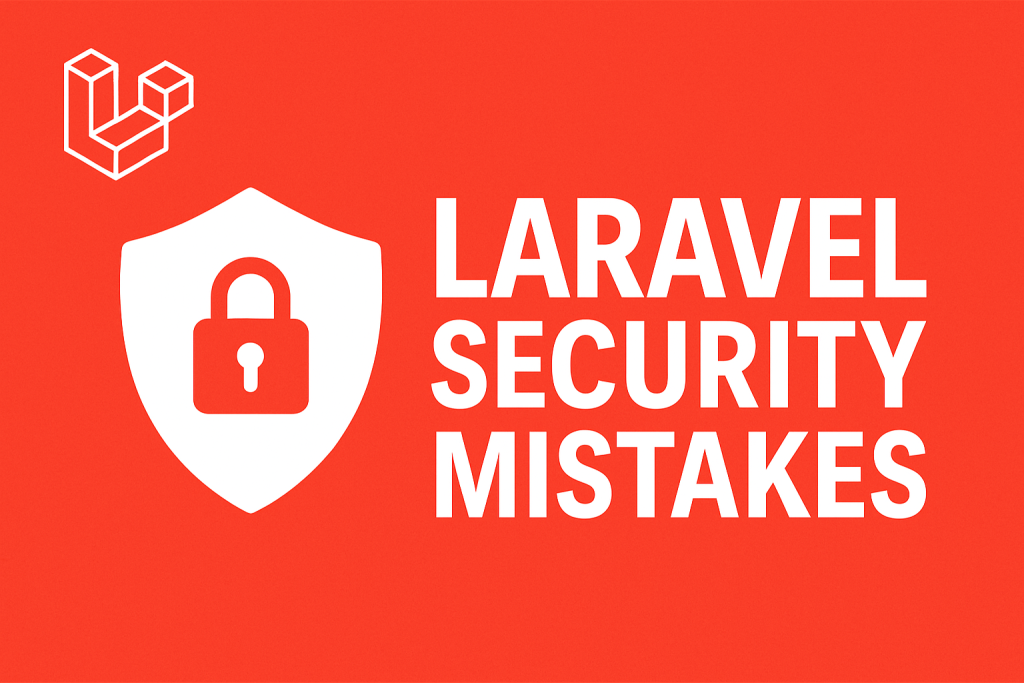
Top 10 Laravel Security Mistakes I Made (So You Don’t Have To)
Look, I love Laravel. It’s probably the most developer-friendly framework I’ve ever used. But here’s the thing — the easier it is to build stuff, the easier it is to accidentally build something that’s… well, kinda dangerous.
I’m not gonna lie: I’ve made some dumb security mistakes over the years. Some of them were harmless. Others could’ve easily turned into security holes big enough to drive a truck through.
So, in the spirit of “learn from my pain,” here are 10 Laravel security mistakes I’ve made — so hopefully you don’t have to repeat them.
1. I Left APP_DEBUG=true in Production 😬
Yeah, I know. Rookie move. But the first time I pushed my Laravel project to production, I forgot to switch off debug mode. And of course, something broke — and the public got a full-stack trace with database connection info. Not great.
Lesson: Always set APP_DEBUG=false in your .env before going live. Better yet, automate your deployment to never miss this again.
2. I Trusted request()->all() Too Much
At one point, I thought Model::create(request()->all()) was genius. Short, sweet, and it works — right?
Well, turns out, it’s also super dangerous. If someone passes in a field you didn’t expect (like is_admin), guess what? That gets saved too. Oops.
Lesson: Use $request->only() to whitelist fields, and protect your models using $fillable. Don’t leave that door wide open.
3. Forgot CSRF Tokens on Custom Forms
I once built an AJAX form outside of Blade — just a standalone HTML file. It worked fine locally, but when I deployed it, people were getting weird errors.
Turns out, I forgot to include @csrf. Laravel blocked the requests (as it should), and I learned the hard way that CSRF protection isn’t optional.
Lesson: Always use CSRF tokens — even on API calls if you’re doing session-based auth.
4. I Didn’t Limit Login Attempts
This one still haunts me. I launched a client dashboard without throttling login attempts. Two weeks later, I saw thousands of failed logins in the logs — someone had clearly tried to brute force a bunch of accounts.
Lesson: Use Laravel’s throttle middleware. It’s literally one line in your route definition. No excuse not to.
5. I Ignored File Upload Validation
Here’s a horror story: I let users upload PDFs, but I didn’t actually check the file type. One user uploaded a .php file renamed as .pdf. My app moved it to /public/uploads/. Yeah… I’ll let you guess what could’ve happened next.
Lesson: Always validate file uploads. Check MIME types, extensions, and if possible, store them outside the public directory.
6. Pushed API Keys to GitHub 😱
This is the one mistake I think every dev has made at least once. I committed my .env file by accident. Even worse, I didn’t notice until GitHub sent me a warning about exposed secrets.
Lesson: Add .env to .gitignore and use tools like GitGuardian or GitHub’s secret scanning to catch slip-ups early.
7. I Didn’t Escape Output in Blade
In my first Laravel project, I used {!! $user->bio !!} everywhere — because hey, it rendered nicely, right?
Turns out, if someone includes <script>alert("Gotcha!")</script> in their bio… well, you just XSS’d your own site.
Lesson: Use {{ }} unless you 100% trust the input. Like, really trust it.
8. Forgot to Secure Admin Routes
This one’s embarrassing. I had a whole /admin dashboard with charts, controls, and user management. But I never actually protected the routes — no auth middleware, nothing. Anyone could type /admin and get in.
Lesson: Use route middleware. ->middleware('auth') is your best friend. Also consider Gate or Policies if you want finer control.
9. Didn’t Update Laravel Often Enough
For a while, I thought: “Laravel is working fine. Why update it?”
Big mistake. I skipped minor updates for months, and missed several important security patches — especially for things like password reset logic and query vulnerabilities.
Lesson: Subscribe to the Laravel security list. At least stay current on patches, even if you’re not ready to jump major versions.
10. I Didn’t Log Anything (Until It Was Too Late)
When something broke or a user did something shady, I had no logs to trace what happened. I didn’t log failed logins, password resets, nothing.
Lesson: Laravel makes logging easy — use Log::info() or set up dedicated audit logs. You can’t fix what you can’t see.
Final Thoughts
Here’s the thing: Laravel actually gives you a lot of tools out of the box to prevent these mistakes. But it’s still up to you, the developer, to use them properly.
I’m still learning. You probably are too. That’s fine. Just don’t make the same security mistakes I did — especially when it’s your client’s data on the line.
Pro Tip: Treat every user input as malicious until proven innocent. It’s a bit cynical… but it’ll save your app one day.
